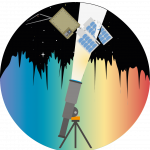
SpecTrackular2024 - 2027
Dieses Projekt zielt auf die Entwicklung eines optischen Teleskopsystems zur spektroskopischen Untersuchung von Weltraumschrott ab. Voraussetzung dafür ist eine, trotz hoher Winkelgeschwindigkeiten, hochpräzise Orientierung und Nachführung des Teleskops. Um die notwendige Genauigkeit zu erreichen, werden ein selbstlernendes Pointing-Modell entwickelt, sowie die Genauigkeit von Umlaufbahndaten durch Messungen verbessert. Eine spektroskopische Vermessung der Schrottobjekte durch Reflexionsspektroskopie kann darüber hinaus Aufschluss über Material, Pose und Rotation der Objekte geben. Weiterlesen →
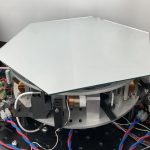
AdLaS – Adaptive mounting system with powerless gravity compensation for mirror segments in large telescopes2023 - 2024
Die Unterdrückung unerwünschter Vibrationen ist bei vielen Präzisionsanwendungen, sowohl in der Industrie als auch in der Forschung, unverzichtbar. Da die hohen Anforderungen durch rein passive Systeme nicht erfüllt werden können, wurde in diesem Projekt ein Lagerungssystem für schwere Lasten mit einer schwebenden Plattform, aktiver Vibrationsunterdrückung und integrierter Gravitationskompensation entwickelt. Weiterlesen →

Research and Flight Test of Advanced Turbulence Cancelling Technologies for Sustainable Urban and Regional Air Mobility (SmartWings2)2023 - 2026
The SmartWings2 project aims enhanced turbulence load suppression (TLS) via new sensor technologies of wind lidar and distributed MEMS turbulence sensing, as well as a novel flaplet. The predecessor project SmartWings successfully demonstrated TLS in light aircraft by means of turbulence probes in front of the wing and actuation of predefleced flaps for direct lift control. Weiterlesen →

Precision Measurements on Moving Objects (mEMO)2023 - 2030
The performance of optical measurement systems for 3D imaging of moving targets suffers from motion-induced blur caused by the relative lateral movement between target and measurement system during the finite measurement time (exposure time). This motion blur introduces additional measurement uncertainties, what results in a trade-off between measurement accuracy and acceptable relative velocity. In inline metrology applications, efficient end-of-line quality assurance is achieved by inspecting items on a conveyor belt. However, to attain accurate measurements, the speed of the conveyor belt speed must be decreased during inspection, which directly results in reduced throughput, becoming a bottleneck in the production line. This project aims to eliminate this bottleneck by introducing advanced compensation and correction strategies. Weiterlesen →

BioBuzz2023 - 2027
In diesem Kooperationsprojekt mit der Uni Wien werden Ansätze der Bestäubungsbiologie und Blütenevolution mit Methoden der Mechatronik kombiniert um zu erforschen, wie sich Melastomataceae Blüten an vibrationsbestäubende Bienen angepasst haben. Hierzu wird ein Vibrationssystems konzipiert, um künstliche, bienenähnliche Blütenvibrationsexperimente durchzuführen. Weiters werden die mechanischen Eigenschaften der Blüten mittels Vibrationsexperimenten im Labor untersucht, um zusammen mit computertomographischen Daten die Biomechanik der Blüten zu modellieren und simulieren. Weiterlesen →
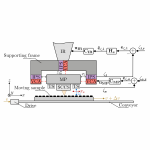
Advanced Robotic Measurements In Line (aRMIN)2023 - 2030
Modern production systems, particularly for the high-tech sector, have a continuously growing demand for precision and throughput. The permanent monitoring and control of the manufacturing process by means of sensors, as well as inline 3D measurement systems for quality inspection are prerequisites to achieve a high yield and high quality of the produced goods. Besides novel production plants and automated assembly techniques, advanced robotic measurement systems for inline applications are considered as the most important enabler for future production. This project aims to design and develop application-specific holistic and advanced inline robotic measurement systems, and to implement adapted combinations of the developed concepts in iTRACK and mEMO for relative motion sensing, compensation and correction. Weiterlesen →
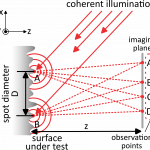
Principles for In-Plane Motion Sensing and Tracking (iTRACK)2023 - 2030
Distance and displacement are important physical quantities for positioning, sensing of object motion, vibration and deformations in various scientific and industrial areas such as non-destructive testing, as well as inline measurement systems. While there are various optical principles available for measuring out-of-plane (axial) displacement, the fast, robust and precise measurement of in-plane (lateral) displacement of arbitrary, non-structured technical surfaces on the sub-micrometer scale remains a largely unsolved challenge. This project aims to develop a fast and highly accurate in-plane sensor that enables measurements at the single to sub-micron scale. Weiterlesen →
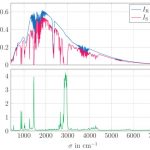
MobileSpectro – Development of a handheld FTIR spectrometer2022 - 2025
Infrared spectroscopy is a fundamental technique for the characterization and analysis of chemical compounds. MobileSpectro aims to develop a miniaturized high precision FTIR spectrometer that enables handheld operation for field use and provides a performance comparable to lab-based instruments. Weiterlesen →
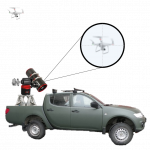
ConvoyFence2021 - 2024
Ziel des vorgeschlagenen Projekts ist die Entwicklung und Integration einer Vibrationsisolationsplattform für vorrangig optische Drohnenidentifikationssysteme, die in Bestandsfahrzeuge integriert werden kann, um einen effizienten Schutz von mobilen Fahrzeugverbänden gegen Drohnenangriffe zu gewährleisten. Weiterlesen →
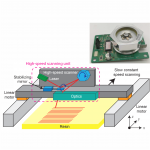
High-speed large format 3D printing
To overcome the speed limitation of stereolithography 3D printers in this project, a polygon mirror based light engine is developed, which enables a laser line scan speed of a few hundred meters per second. Weiterlesen →